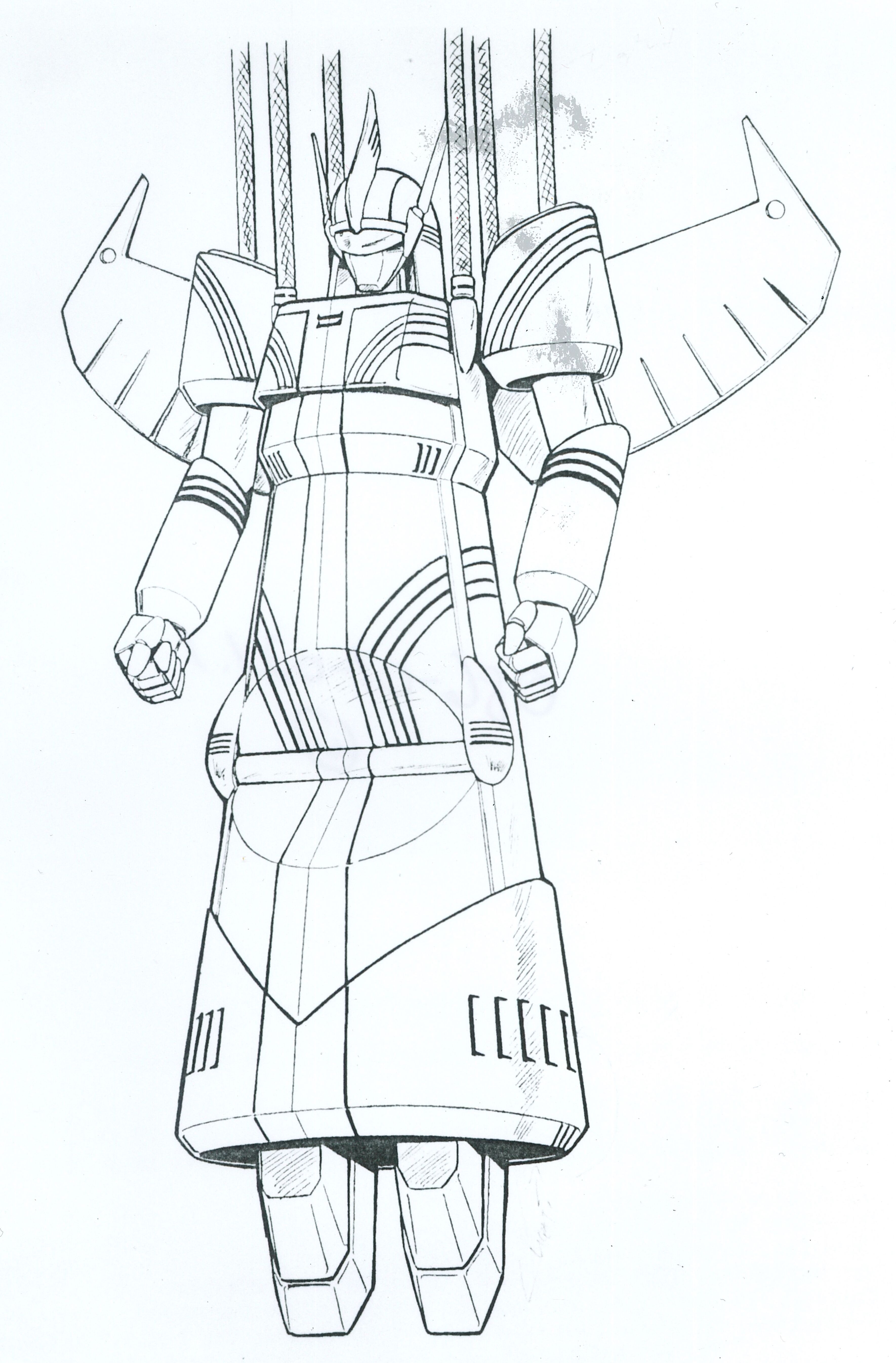Treasures from the HGO Vaults: Philip Glass’s The Making of the Representative for Planet 8
When David Gockley took over as General Director of Houston Grand Opera in 1972, he made it his mission to lead the company down what he called “that risky, seldom-trod road of producing a new opera.” Two years later, HGO mounted its first world premiere, which inaugurated a regular stream of commissions that has extended to the present day.
The 1980s saw some particularly experimental repertoire. Minimalism—a musical style that had, until then, been confined to avant-garde circles—was beginning to enter mainstream culture. Philip Glass’s The Panther and Akhnaten had their first U.S. performances at HGO in 1981 and ’84, respectively, and John Adams’s Nixon in China premiered at the house in ’87.
These performances set the stage for one of the strangest and most fascinating compositions mounted at HGO: Philip Glass’s The Making of the Representative for Planet 8. Based on a 1982 novel by British sci-fi author Doris Lessing, who adapted the libretto herself, it’s a literal “space opera” about a people’s struggle to survive as an ice age overtakes their world. Planet 8 premiered at HGO in July of 1988, and the production subsequently toured to English National Opera, Het Muziektheater Amsterdam, and Theater Kiel in West Germany.
But like so many works of contemporary opera, Planet 8 immediately slipped into obscurity—there were no revivals and no commercial recordings. Without any audio or video documentation, we in the present day have no way to judge the opera for ourselves. Based on a handful of vicious reviews by cranky critics, it’s easy to get the impression that the work was an utter failure.
But materials from HGO’s archives offer a totally different picture of Planet 8. Though not without flaws, the opera was by no means a catastrophe of galactic proportions. On the contrary, this ambitious endeavor—born of a unique East-meets-West collaboration—represented an intriguing new direction in the art form, bringing together elements of science fiction, ecology, mysticism, philosophy, and anime.
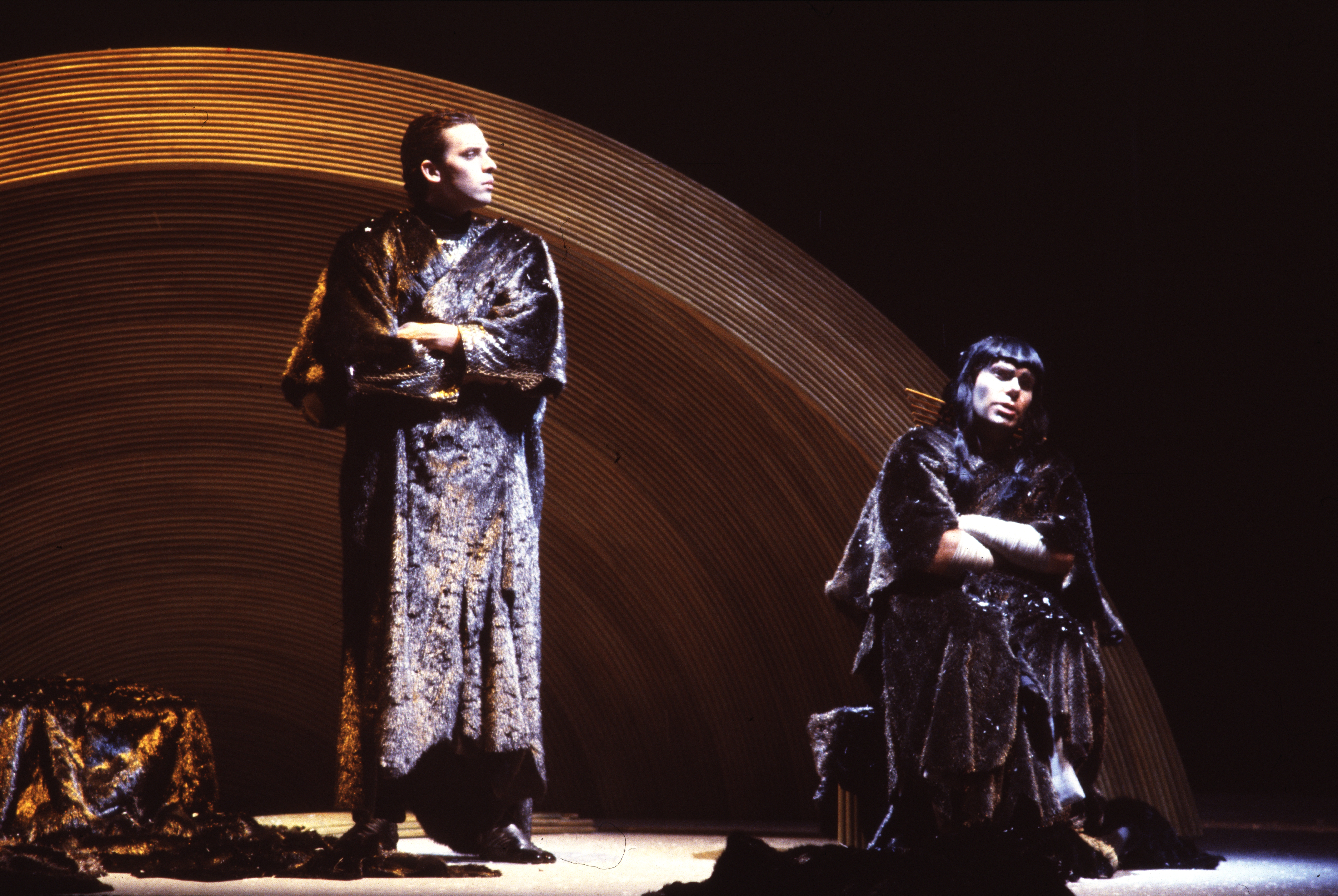
While lunar voyages featured in a few fantasy operas by Haydn, Offenbach, Janáček, and others, it was only after the dawn of the space age that composers began turning to sources that fit our modern conception of science fiction. Karl-Birger Blomdahl’s Aniara from 1959, likely the first major sci-fi opera, was followed in 1968 by Gian Carlo Menotti’s Help, Help, the Globolinks!—a campy children’s one-acter about an alien invasion. In 1987, the year before Glass’s Planet 8 opened, composer Tod Machover adapted Philip K. Dick’s novel VALIS into an electronic-music extravaganza.
The kinds of extraterrestrials, spaceships, supercomputers, and outlandish goings-on of these operas were less of a focus in Planet 8. True, Doris Lessing’s original book takes place on a distant world. But, as in much science fiction, this imaginary setting is merely a stand-in for Earth. Lessing speculates on how a species like ours might navigate a sudden climate disaster. At the time of the novel’s writing, however, scientists were worried about global cooling rather than warming. And so Lessing’s Planet 8 is beset by an ice age—a very potential threat for readers in the early ’80s.
It’s tempting to interpret the plot through our 21st-century anxieties around climate change. But there’s a key distinction from our present situation: the people of Planet 8 bear no responsibility for the ice age and are ultimately powerless to curb its rapid advance. Rather than climate action, Lessing is concerned with how a society adapts, evolves, and eventually disintegrates when faced with an unavoidable calamity.
But more importantly, Lessing explores what it means for a species to die—not only from an ecological perspective, but from a spiritual one as well. As Glass wrote in his program note for the HGO premiere: “Just as myths and legends handle issues people find hard to deal with, the exotic, unfamiliar surroundings of Planet 8 enable us to contemplate at some distance the meaning of the death of a planet, and, by extension, the meaning—and the form—of our own mortality.”
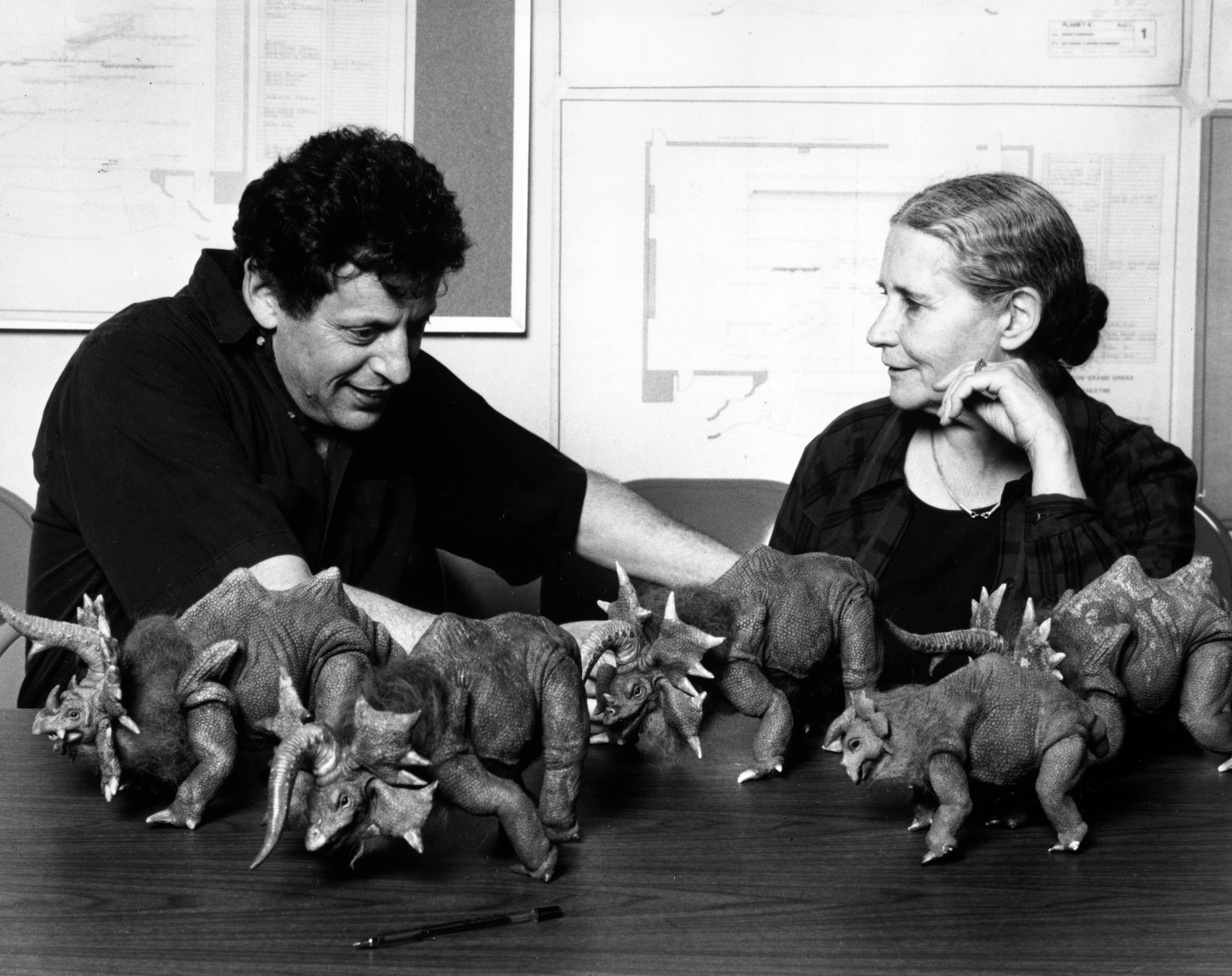
Sometime in the early 1980s, Philip Glass approached Doris Lessing about writing an opera based on her five-novel series Canopus in Argos. After settling on the fourth volume, Planet 8, they launched into a mostly long-distance collaboration. The work was completed in 1985—before either artist had even signed a contract with an opera house. In 1997, author and composer teamed up again to adapt the second entry in Lessing’s pentalogy, The Marriages Between Zones Three, Four and Five, which premiered at Theater der Stadt Heidelberg.
There’s no overarching storyline connecting the five books. Instead, they offer separate glimpses of an advanced civilization known as Canopus. The Canopeans occupy themselves with massive evolutionary experiments, crossbreeding species of intelligent beings to populate new planets.
Planet 8 is one of these projects. Its people live in peace and happiness, basking in their home world’s warm and lush environment. They’re governed by a body of representatives—leaders from different industries and sectors of society. Agents are sent from Canopus periodically to oversee the development of their species and to guide their way of life. The opera is narrated by a representative named Doeg, a historian of sorts who serves as the Memory Maker and Keeper of Records.
HGO World Premiere Cast and Creative Team
Doeg, Memory Maker and Keeper of Records: Harlan Foss
Alsi, Young Woman: Louise Edeiken
Johor, Canopean Agent: Timothy Breese
Klin, Fruit Maker: Edrie Means
Marl, Keeper of the Herds: David Langan
Bratch, Representative for Health: Julia Parks
Pedug, Representative for Education: Richard Sutliff
Rivalin, Custodian of the Lake: Patricia Shockler
Masson, The Builder: Edgar Moore
Nonni, Young Man: Jason Alexander
Conductor: John DeMain
Chorus Master: Richard Bado
Director: Minoru Terada Domberger
Set and costume designers: Eiko Ishioka, Minoru Terada Domberger
Act I
The people of Planet 8 sing of their love for building new houses from sticks and reeds. Their pleasant tasks are interrupted by Johor, a Canopean agent, who warns of “bad times” ahead. Temperatures will plummet, and Planet 8 will succumb to snow and ice, which the people have never seen. Before leaving for Canopus, Johor directs them to channel their energy into constructing a massive wall encircling their planet that will hold back the glaciers spreading from their northern pole.
Act II
The people have completed the wall, leaving gaps in its structure to allow herds of shaggy beasts to pass through as they flee the freezing weather. Representatives warn that the planet’s rich vegetation has all but disappeared. Desperate for food, the people reluctantly break their own commandments and harvest fish from the sacred lake. In spite of their hardships, they maintain hope that Canopus will send a fleet to save them. Yet Johor returns with the news that there are no spaceships coming to take them off the planet.
The people of Planet 8 will die, but Johor promises that Canopus will not abandon them. He adds enigmatically that “there are many different ways of dying.” Alone with Doeg, Johor asks the Memory Maker if he has ever reflected on what it means to be a representative: “Whom do you represent?” Alsi, a young woman, enters to report that the people have lost all will to go on and are starving themselves. Johor insists that they stay alive a little longer. He reminds Alsi and Doeg of the microscopes Canopus once brought to the planet. They recall that, as they zoomed in, they saw their bodies consisted mostly of empty space—even the tiniest particles at the core of their beings were composed of nothingness.
Exhausted by Johor’s questioning, Doeg sleeps and dreams of a dazzling world of light and color. Johor explains that this is the realm from which Doeg and the others of his species emerged—and to which they will return—but only after they have earned it through hard work and perseverance. Meanwhile, a brief period of summer on the south pole has seen the growth of a blue flower with energizing properties. Johor orders that the people consume it to revive themselves.
Act III
Alsi mourns that the blue flower isn’t enough to keep the planet’s hordes of animals from going extinct. Distracting them from their anguish, Johor pushes Alsi and Doeg to reflect further on their existence. Doeg remarks that he sometimes feels as if his identity contains all the possible variations of himself that could have been born. He observes that this is how Johor, with his superior intellect, must see the people of Planet 8—as a composite of individuals. On the brink of oblivion, Alsi despairs that all that’s left of her life is a smear of memories that dissolves into nothingness. But at that moment, she and Doeg share the same revelation: “Unless, I am the wind that blows through the spaces that lie between electron and electron.”
With this breakthrough, Johor determines that they’re ready for the next step. The wall collapses and the glaciers are unleashed on the rest of the planet. As the people finally face their impending doom, Johor leads the representatives on an expedition to the north pole. They die together on a mountaintop and their spirits join, forming a single Representative for Planet 8 that ascends from the north pole and journeys into the universe.
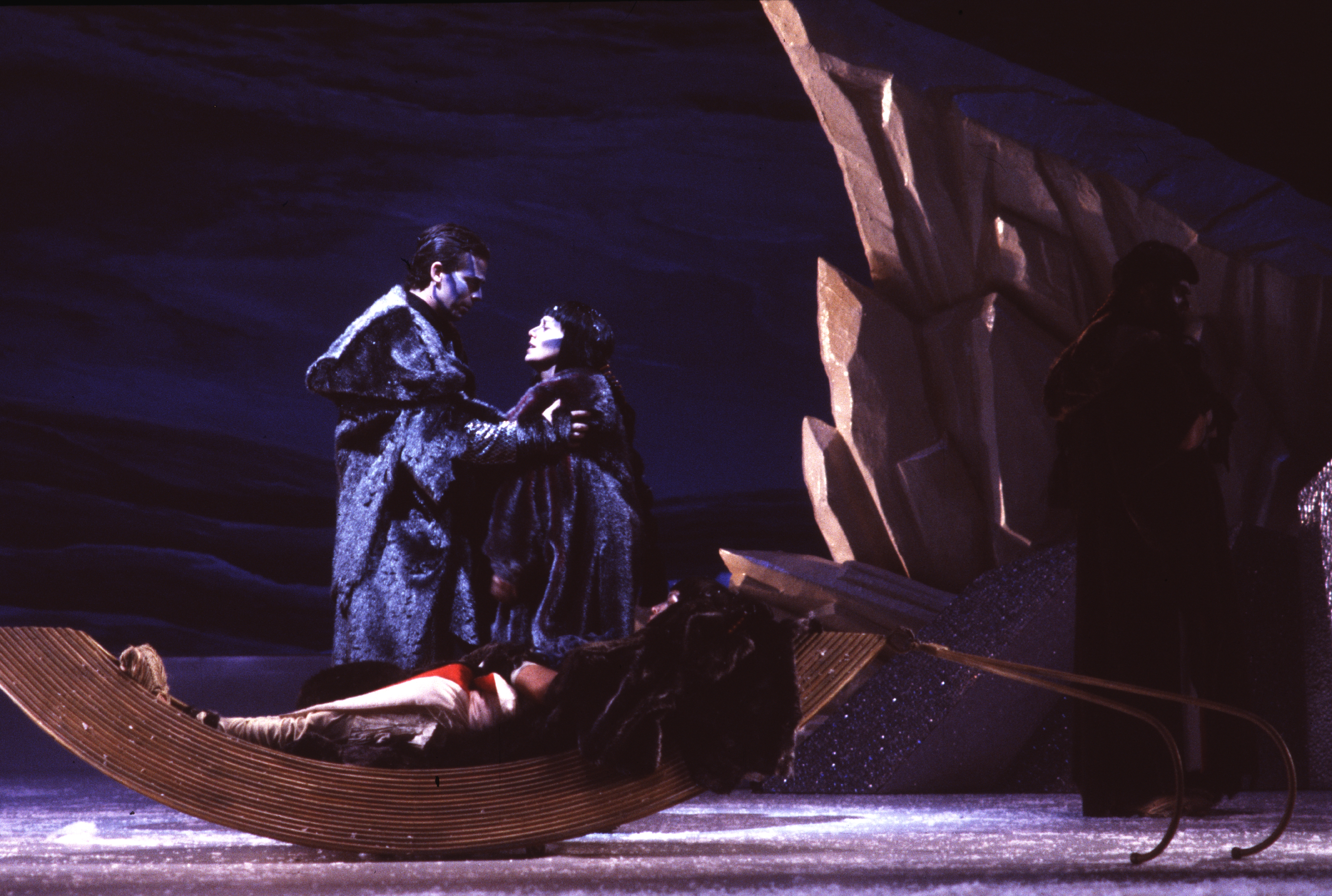
In his earliest operas, Philip Glass stretched the boundaries of the genre to their limits. Einstein on the Beach (1976), Satyagraha (1980), and Akhnaten (1984)—which together form a trilogy—were almost entirely devoid of plot. These works didn’t dramatize the biographies of their respective subjects (Einstein, Gandhi, and the pharaoh Akhnaten). Rather, Glass likened them to musical-theatrical “portraits” of historical figures, offering scattered snapshots of their lives and evoking their ideas and personalities through static tableaux.
With Planet 8 came a shift away from this abstract mode of representation toward a more traditional approach to storytelling. Still, even if there’s a concrete narrative, it’s not exactly heavy on action. On the contrary, the libretto is overwhelmingly devoted to discussion—the planet’s decline is primarily conveyed through characters’ conversations or relayed in reports. But most of the talk is philosophical in nature.
At the core of both Acts II and III are lengthy and intense dialogues among the three protagonists. Like Socrates, Johor deliberately leads Doeg and Alsi through a line of questioning, allowing them to reach eye-opening conclusions for themselves. These scenes are opportunities for Lessing to articulate complex metaphysical concepts—many of them inspired by the author’s close engagement with Sufism, a mystical strain of Islam. In the end, the opera is less about the ice age itself than the existential quandaries it raises.
Employing his signature minimalist techniques, Glass designed his score to accommodate these sprawling stretches of dialogue. He typically sets up an ostinato in the orchestra—that is, a repeating pattern, often an endlessly arpeggiating chord—that serves as a backdrop for the characters’ exchanges. The vocalists move flexibly between speech and sung recitative, occasionally transitioning into more lyrical territory when they express a profound emotion or emphasize some crucial realization. If Glass needs to get through an especially long monologue, like the solid two pages of block text in Doeg’s final narration, he simply has the soloists recite uninterrupted over the orchestra.
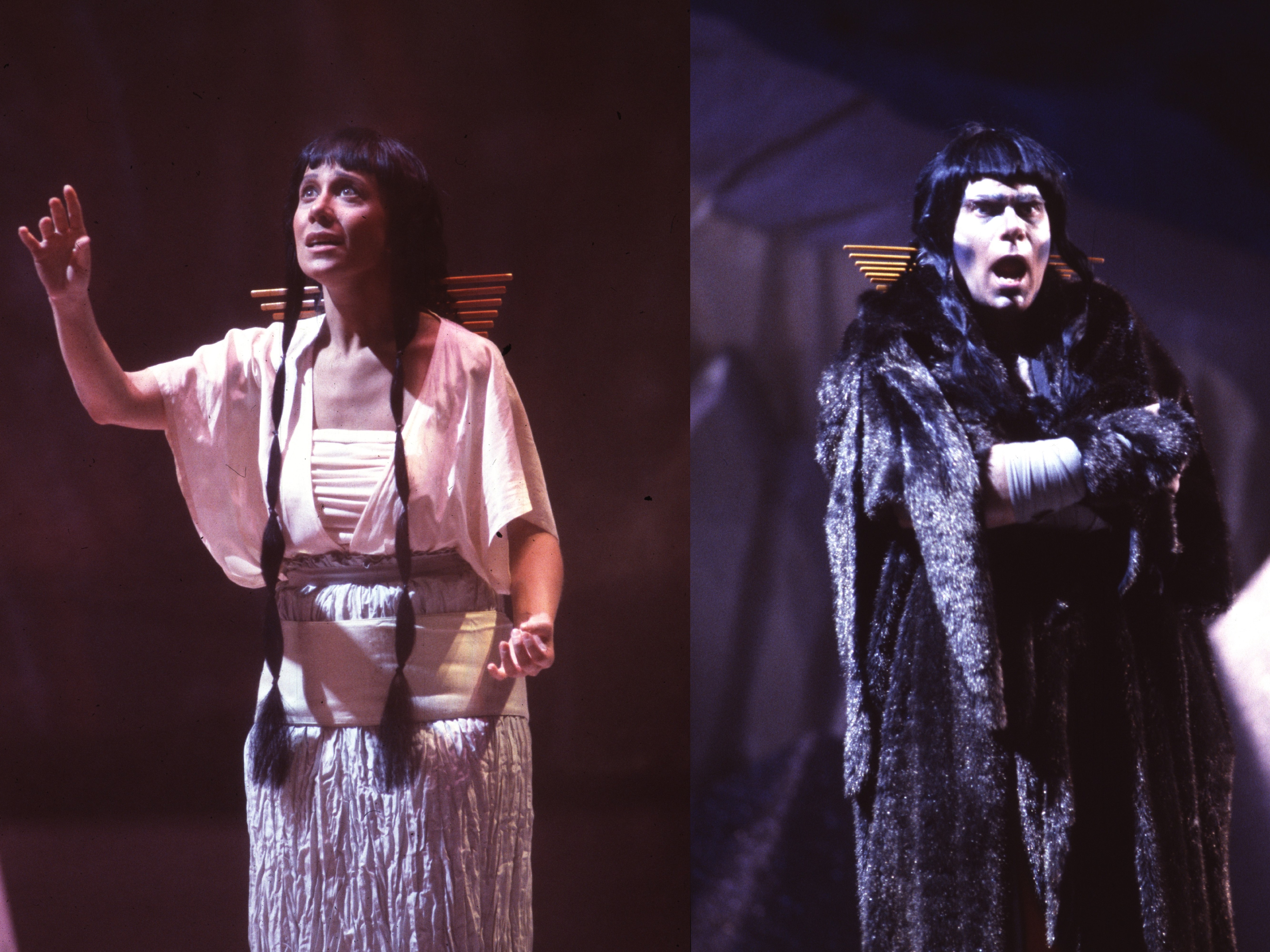
While there are passages in Planet 8 that certainly stray into spoken theater, the opera isn’t as chatty and unfocused as critics of the time made it out to be. There’s much in the score that carries forward the rich musical language of his previous operas. After Einstein on the Beach, which was written for the stripped-down forces of the composer’s own chamber group, Glass began writing for standard orchestra to accommodate house ensembles at companies like HGO. Armed with a full instrumental arsenal, he crafted masterpieces like Satyagraha and Akhnaten, which pulse with cosmic energy. Even without a conventional libretto to fall back on, Glass managed to stir strong affective responses with his yearning melodies, poignant progressions, and mantra-like repetitions.
His music—already so emotionally and psychologically sophisticated—is all-the-more compelling in the context of a linear operatic drama like Planet 8. Glass developed some simple yet elegant compositional devices to tell this sci-fi saga. Throughout the score are variations on a descending, E-Phrygian scale. Neither major nor minor, it’s a musical mode with a powerful downward pull, suggesting both the southward migration of the glaciers and the imminent demise of a dying people. Indeed, there’s a tone of fatalism and tragic inevitability that pervades much of this work—we know from the first bars that it’s not going to be a happy ending.
That said, Glass’s music never plods depressingly and always retains its characteristic momentum. There’s a particularly devastating orchestral interlude in Act III that sonically paints the blizzard conditions of Planet 8: flurries of piccolo sixteenth notes; pounding, backbeat strokes in the percussion and low brass; and a heroic yet mournful trumpet motive that attempts to free itself from this relentless snowscape.
Near the end, Glass seems to offer some genuine hope. The bassoons and cellos—which had previously been assigned to sinking Phrygian scales—suddenly reverse their course during Doeg’s final monologue. Supported by a slowly climbing string ostinato, these instruments take up a new, upward-rising theme that charts the representatives’ arctic trek toward the pole. Before these last survivors set out on their mission, Glass foreshadows the mysterious melding of souls that they’ll achieve upon death. One by one, the representatives renounce their identities in a kind of ritual. Each of them is given a different vocalise pattern—that is, a wordless melody sung on “ah.” By the end of the ceremony, these motives have combined into a multilayered, interlocking ensemble.
Of the characters, Alsi is the most musically fleshed out. She’s usually accompanied by a combination of flute, clarinet, and harp that captures her sweetness, her melancholy, and her tender love for the planet’s creatures. Glass saves some of his loveliest and most expressive vocal writing for the soprano playing the role (Louise Edeiken in the HGO premiere). In one passage, Alsi’s soaring line peaks in a series of heartbreaking climaxes as she remembers the vast, empty spaces she saw beneath the microscope—an emptiness that Glass very effectively conveys in the full measure of rest that follows. Her Act III epiphany that this “nothingness” must be filled with her spiritual essence is a thrilling moment of almost religious transcendence. Joined by Doeg in an ecstatic duet, she leaps to a high B over the full orchestra, which swirls and churns with activity like the vibrating electrons Alsi describes.
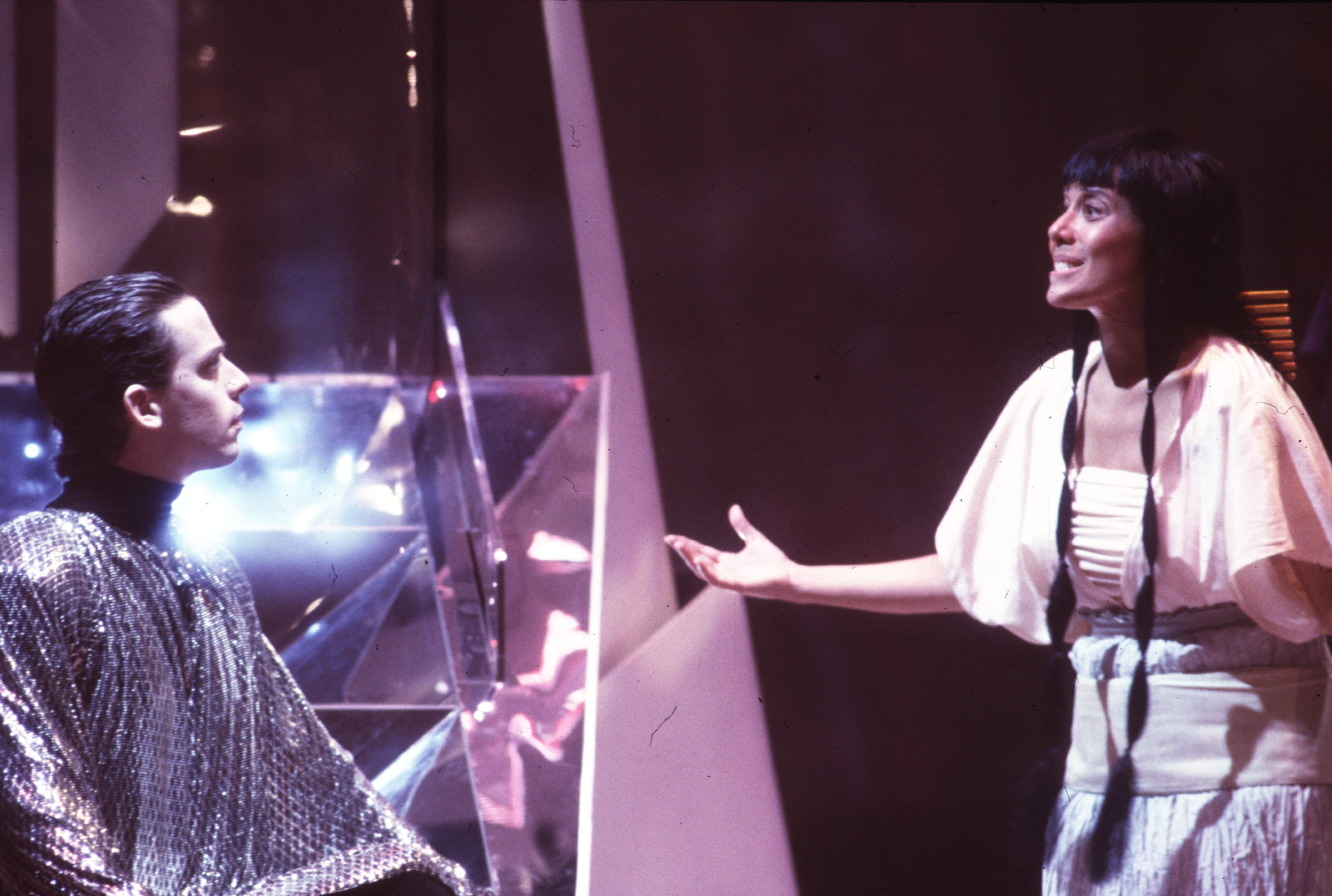
In order to bring to life the “exotic, unfamiliar surroundings of Planet 8,” as Glass put it, HGO enlisted a design team from a country that was still very foreign to most Americans in the 1980s: Japan. The island nation didn’t have the same overwhelming cultural influence on the United States that it does now. In fact, though technically our ally since the end of WWII, Japan was viewed as America’s number-one rival during the ’80s. Bolstered by the tech and auto industries, the Japanese economy boomed. Americans, witnessing a huge influx of Japanese investment in our markets, feared being surpassed and even infiltrated by a new global superpower. These anxieties were articulated in the 1992 novel Rising Sun by Michael Chrichton, author of Jurassic Park.
Japanese culture did manage to penetrate in small ways, usually through popular channels like video games and children’s entertainment. The ’80s also saw more accurate depictions of Japan in Western media, notably the 1980 miniseries Shōgun and Paul Schrader’s 1985 movie Mishima. This latter film, which was set to a soundtrack by Philip Glass, featured surreal sets by Japanese graphic designer Eiko Ishioka. Ishioka would go on to develop a fantastical and often macabre style that she applied in her Oscar-winning costumes for Bram Stoker’s Dracula (1992) as well as her 2003 logo design for the Houston Rockets.
Likely owing to her previous collaboration with Glass on Mishima, Ishioka was hired as designer for Planet 8. She was joined by her Japanese-German colleague Minoru Terada Domberger, who served as both director and co-designer. Together, they dreamed up an extraterrestrial environment for Glass and Lessing’s opera. Their designs were undeniably sci-fi: sparse, lunar-looking landscapes; jagged, crystalline glaciers; semi-circular dwellings for the inhabitants; monstrous, otherworldly livestock. Not to mention Johor’s silver-sequined tunic, straight out of Star Trek.
But many of the “alien” aspects of the costuming were clearly indebted to Japanese aesthetics. The people of Planet 8 wore robes and sashes akin to yukata or kimono. Their silky black wigs emulated the flowing taregami hairstyles of the Heian period (794-1185 AD), and the wooden rods in their braids were redolent of the combs and kanzashi hairpins worn by geisha. In their ice-age attire—furs, thick straw sandals, heavy makeup—the cast resembled the indigenous Ainu people of Hokkaido, Japan’s snowy, northernmost island.
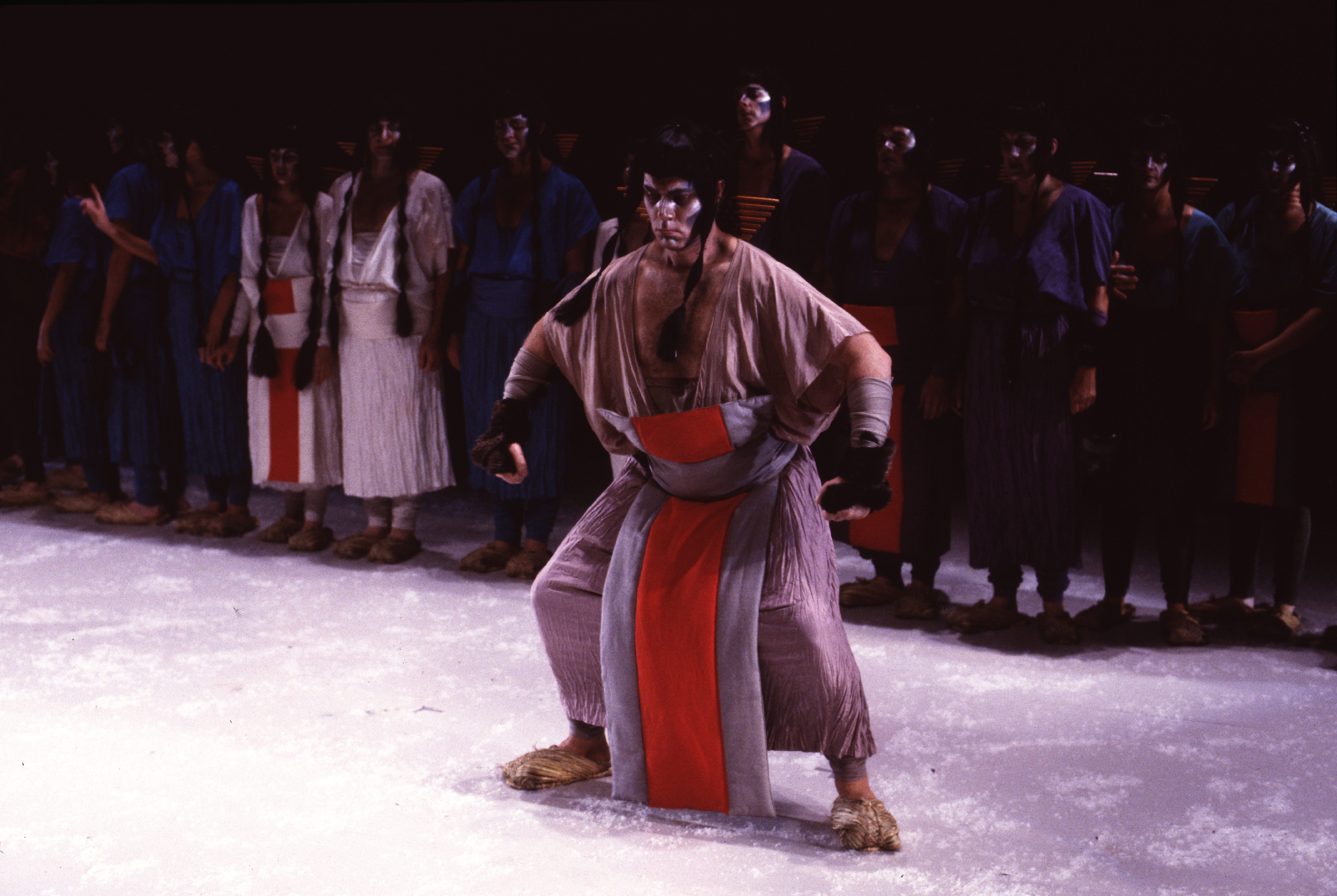
As Domberger wrote in his program note, “it became clear to us that we all wanted the physical production (costumes, scenery, wigs, props, film, etc.) to be built in Japan. We knew this would give it a different ‘look.’ It was very important that Planet 8 be its own place—its own planet!” However, as soon as the director arrived in his birth country to begin commissioning artisans, disaster hit: “the dollar dropped drastically against the yen to almost one half of its value.” The opera’s budget was most likely a victim of the 1985 Plaza Accord, an agreement among five nations that intentionally devalued American currency.
And yet Domberger showed stunning tenacity and resourcefulness in the face of adversity. He put together a brochure about the production, which he circulated to nearly a hundred companies. When there were no responses, he cold-called potential backers, managing to raise additional funds and securing donations of props and costumes from craftsmen. These included a noh mask gifted by the widow of a master carver—an item that Domberger used as a mold to cast clear plastic copies for Planet 8.
By far the most unmistakably Japanese aspect of Ishioka and Domberger’s design was a set piece that dominated the production—a giant robot serving as Johor’s interplanetary transport. Illuminated by strobe lights and lowered from the flies like some Greek god in a baroque opera, the machine made quite an impression on Houston audiences. The marketing team relied heavily on this image to promote the premiere—the “space traveler,” as Lessing dubs the ship in her libretto, was pictured on both versions of the poster.
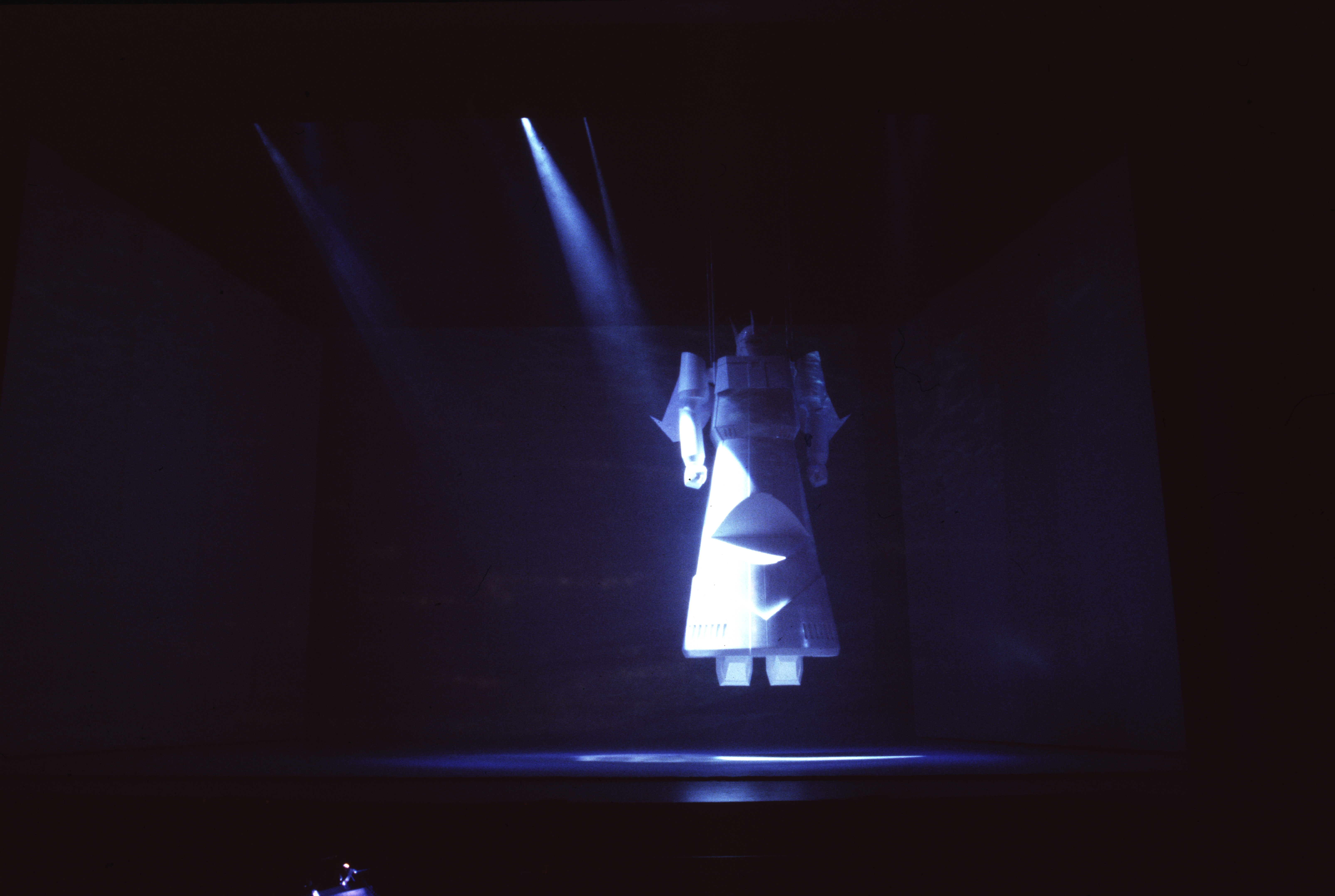
And yet, it’s entirely possible that for HGO attendees in 1988, this android wasn’t recognizable as something quintessentially Japanese. Fighting robots called “mechas” had long been a staple of manga and anime over in Japan. But these series had only begun to appear on American television sets. Operagoers probably had little knowledge of Japanese-produced kid’s programs like Transformers and the lesser-known Robotech, both of which aired in the U.S. in the mid-1980s. (The enormously popular Gundam franchise, which is synonymous today with the word “mecha,” wouldn’t reach stateside until the ’90s.)
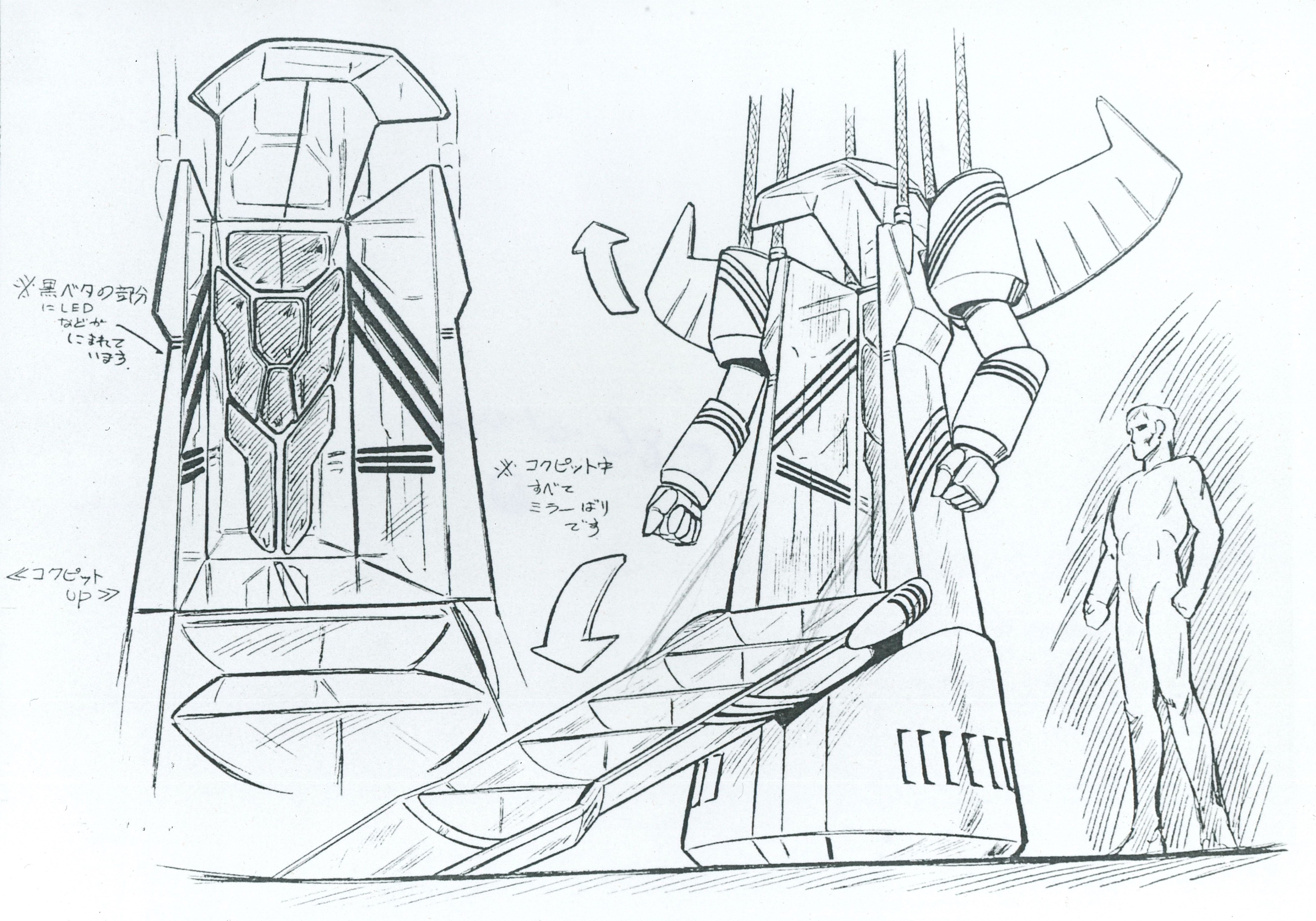
In a bit of sad irony, Japan—which served as a stand-in for the exotic and once-prosperous Planet 8—experienced an ice age of sorts in the years after the opera opened. The nation’s economic bubble burst in 1992, ushering in the so-called Lost Decades of market stagnation. The fate of Glass and Lessing’s work was no less tragic. Following the HGO premiere and productions in Europe, Planet 8 went extinct from the repertoire. Not even an official recording exists. There’s always the hope that a company will remount it in the future. But for now, the memory of Planet 8 lives on like the fusion of souls from the final scene, a metaphor that Domberger used to describe the opera’s cross-cultural genesis:
“I would like to think that the body of this operatic work and its message—our artistic collaborative efforts and those of the co-producers—and the help from Japan…that all of these elements have joined together to make a spirit of its own much like that of Planet 8.”
